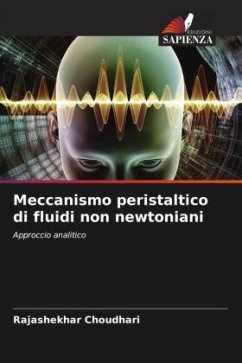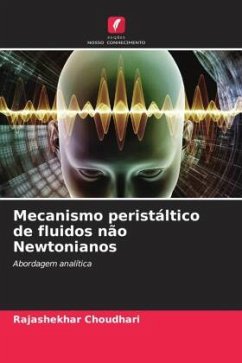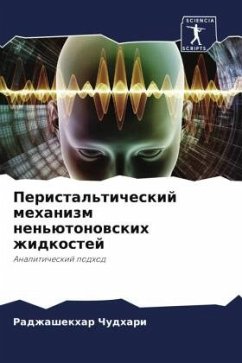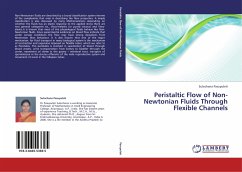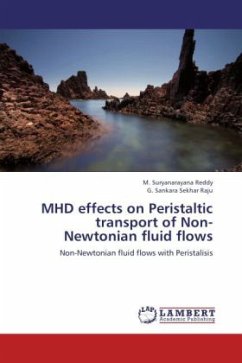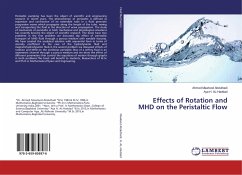
Peristaltic mechanism of non-Newtonian fluids: Analytical approach
Versandkostenfrei!
Versandfertig in 1-2 Wochen
41,99 €
inkl. MwSt.

PAYBACK Punkte
21 °P sammeln!
This book investigates the mathematical model of a peristaltic mechanism of non-Newtonian fluids. Moreover, because of its use in industrial and biological fields, the fluid considered is non-Newtonian. Blood peristalsis was thoroughly studied among the biological fluids. Blood, depending on the flow area, exhibits dual nature. The blood flow in the large arteries is Newtonian, where a linear relation occurs. However, non-Newtonian behavior is noticed when the flow is associated with micro arteries. It is difficult to explain the different rheological effects such as hematocrit, shear rate, va...
This book investigates the mathematical model of a peristaltic mechanism of non-Newtonian fluids. Moreover, because of its use in industrial and biological fields, the fluid considered is non-Newtonian. Blood peristalsis was thoroughly studied among the biological fluids. Blood, depending on the flow area, exhibits dual nature. The blood flow in the large arteries is Newtonian, where a linear relation occurs. However, non-Newtonian behavior is noticed when the flow is associated with micro arteries. It is difficult to explain the different rheological effects such as hematocrit, shear rate, variable viscosity, and so on due to the complex structure and blood movements. As a consequence, there are numerous approaches to mathematically defining these properties through equations, some of which result from fitting a curve to experimental data and others based on some rheological models. Among the several non-Newtonian models, the current book employs Herschel-Bulkley, Casson, Bingham, and Rabinowitsch fluid models to investigate peristaltic transport in various geometries and conditions.
This book investigates the mathematical model of a peristaltic mechanism of non-Newtonian fluids. Moreover, because of its use in industrial and biological fields, the fluid considered is non-Newtonian. Blood peristalsis was thoroughly studied among the biological fluids. Blood, depending on the flow area, exhibits dual nature. The blood flow in the large arteries is Newtonian, where a linear relation occurs. However, non-Newtonian behavior is noticed when the flow is associated with micro arteries. It is difficult to explain the different rheological effects such as hematocrit, shear rate, variable viscosity, and so on due to the complex structure and blood movements. As a consequence, there are numerous approaches to mathematically defining these properties through equations, some of which result from fitting a curve to experimentaldata and others based on some rheological models. Among the several non-Newtonian models, the current book employs Herschel-Bulkley, Casson, Bingham, and Rabinowitsch fluid models to investigate peristaltic transport in various geometries and conditions.
This book investigates the mathematical model of a peristaltic mechanism of non-Newtonian fluids. Moreover, because of its use in industrial and biological fields, the fluid considered is non-Newtonian. Blood peristalsis was thoroughly studied among the biological fluids. Blood, depending on the flow area, exhibits dual nature. The blood flow in the large arteries is Newtonian, where a linear relation occurs. However, non-Newtonian behavior is noticed when the flow is associated with micro arteries. It is difficult to explain the different rheological effects such as hematocrit, shear rate, variable viscosity, and so on due to the complex structure and blood movements. As a consequence, there are numerous approaches to mathematically defining these properties through equations, some of which result from fitting a curve to experimentaldata and others based on some rheological models. Among the several non-Newtonian models, the current book employs Herschel-Bulkley, Casson, Bingham, and Rabinowitsch fluid models to investigate peristaltic transport in various geometries and conditions.



